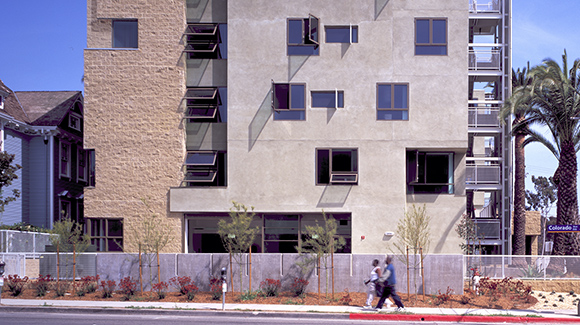
(Photo Credit: calderoliver/Wikimedia)
It’s no secret that California is an expensive place to live as evidenced by the Bloomberg Affordable Housing Index which shows that the state has four of the five least affordable metro areas in the country. And as more Californians fall into the affordability gap, they are finding that the cost of not having adequate housing extends to other parts of their lives.
The lack of affordable housing can affect health outcomes and more. “If people can't afford to have a unit on their own, they've got to double up or they've got to live in a car,” said Dr. Raphael Bostic of USC’s Sol Price School of Public Policy. “And that in and of itself, creates a lot of stress. And that stress have the effect of making people make poor decisions.”
This can have implications in the classroom and future employment, added Dr. Doug Jutte, executive director of Build Healthy Places, a non-profit that supports collaboration across the health and community development sectors to improve low-income areas and the lives of its residents.
“The lack of affordable housing, the lack of quality housing, the stress of struggling to meet your housing needs on a regular basis, the difficulty of living in tight quarters through crowding, living in dangerous neighborhoods without the services that you need, what all that leads to is increasingly, something that we call ‘toxic-stress,’” said Jutte.
For children, he added that toxic stress, “sets up the child over the full lifetime, it sets them up for a range of bad outcomes.” This type of stress affects the brain development of “executive function,” which controls concentration, emotional responses and working memory.
The negative effects on decision making can contribute to poor health behaviors — like smoking and drinking — in adults dealing with toxic stress, Jutte explained. “That ends up negatively effecting the parent’s health, again through increased chronic disease in adults, through parenting. It’s harder and harder to monitor your children and protect them from their environment.”
When 69-year-old Zondre Johnson moved into her affordable housing unit, she immediately felt the difference. “My body began to heal itself from within,” said Johnson, who moved to a Clifford Beers Housing complex in Los Angeles four years ago.
“I saw my life being a life now,” added Johnson. “I felt like a human being and I felt like I was forever going to be fulfilling my dream.” Johnson was living in a shelter before she found housing through Residents United Network and Housing California, an affordable housing advocacy organization made of residents, community leaders, developers and advocates.
As founder and CEO of Castlemont Renaissance, an East Oakland non-profit dedicated to building a healthy and robust community, Olis Simmons sees first-hand how the lack of affordable housing affects residents.
“If you come out of a related field to public health, you understand social determinate health and you understand the interconnected nature of all of these things,” said Simmons.
But Olis said that affordable housing is just one component in building a healthy community: “The connection between environment and health, employment, public safety, outdoor green space, all of it is connected. We’ve taken on the holistic approach to healthy neighborhoods.”
The connection between the lack of affordable housing and poor health outcomes is clear to those studying the issue, working in the communities and especially to those living without proper housing. Tackling the costs of the housing affordability gap will be front and center at this year’s California Economic Summit, which will be held in Sacramento on December 13-14. (Registration and Information)
“I went into my bedroom window and these birds started singing, and those birds were welcoming me to my new home,” said Johnson remembering her first day. “I have always said when you’re out there in the streets and in the struggle, you don’t hear nature.”

